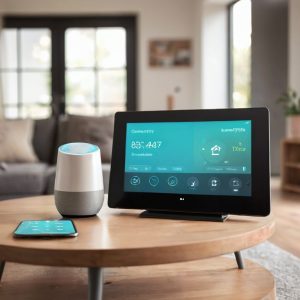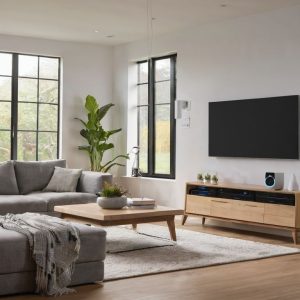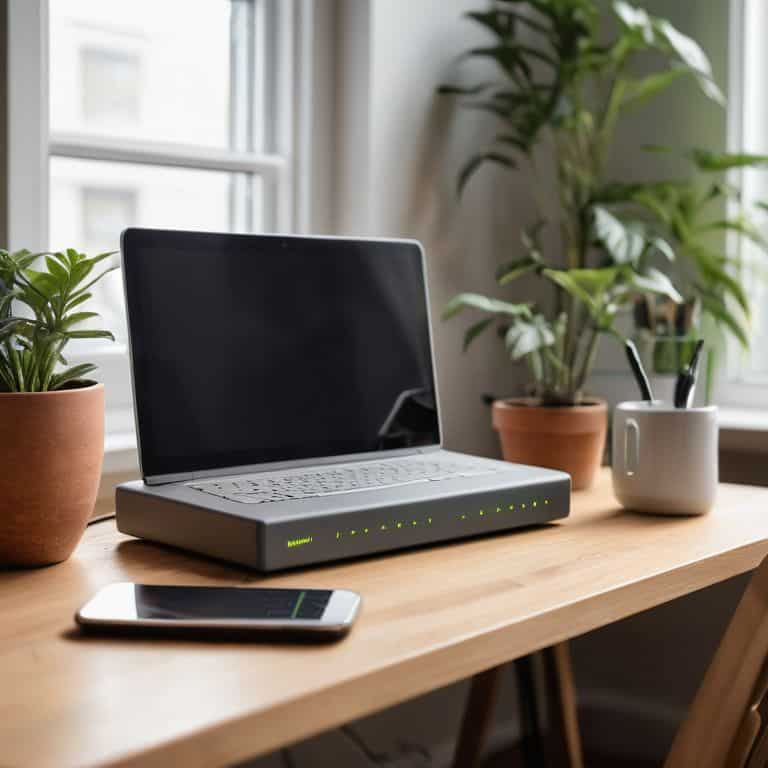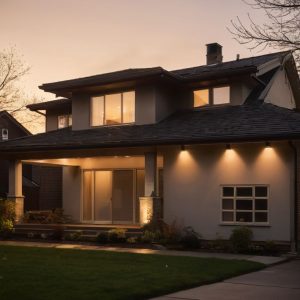I still remember the frustration of trying to get a strong WiFi signal in my own home. It seemed like no matter where to place your wifi router for best coverage, I just couldn’t get it to reach every room. I’d try moving it to different corners, adjusting the antennae, and even restarting it multiple times, but nothing seemed to work. It wasn’t until I took a step back and thought about it like a car’s radio signal – _you need a clear path for the signal to travel_ – that things started to make sense.
In this article, I’ll share with you the simple tricks I’ve learned over the years to optimize your WiFi router’s placement for maximum coverage. You’ll discover how to identify the best spot in your home, _without needing any special equipment_, and get a strong signal in every room. I’ll walk you through it in a way that’s easy to understand, using relatable examples and straightforward advice. By the end of this guide, you’ll be able to confidently place your WiFi router in the ideal location and enjoy a fast, reliable connection throughout your home.
Table of Contents
- Guide Overview: What You'll Need
- Step-by-Step Instructions
- Where to Place Your Wifi Router for Best Coverage
- 5 Key Tips to Boost Your WiFi Signal
- Key Takeaways for Optimal WiFi Router Placement
- The Key to Seamless Connectivity
- Conclusion: You're Now a WiFi Router Placement Master
- Frequently Asked Questions
Guide Overview: What You'll Need

Total Time: 30 minutes to 1 hour
Estimated Cost: $0 – $20
Difficulty Level: Easy
Tools Required
- Wifi Router (with power cord)
- Ladder (for high shelf access)
- Measuring Tape (for optimal placement)
- Wifi Analyzer App (for mobile devices)
Supplies & Materials
- Router Placement Guide optional
- Ethernet Cable (for wired connections)
- Shelf or Table (for elevated router placement, approximately 3 feet to 6 feet off the floor)
Step-by-Step Instructions
- 1. First, don’t panic if you’re not sure where to start with placing your WiFi router for the best coverage. Let’s break it down into simple, manageable steps. Think of it like checking the oil in your car – you need to know where to look and what to do, and then it’s a breeze.
- 2. Next, take a walk around your home and think about the areas where you use your devices the most. This could be your living room, home office, or backyard if you like to work or relax outside. Make a mental note of these spots, as they’ll be crucial in determining the best location for your WiFi router.
- 3. Now, let’s talk about the ideal placement for your WiFi router. You’ll want to place it in a central location, preferably on a high shelf or mounting it on the wall to minimize interference from other devices. Avoid placing it in a corner or against a wall, as this can reduce the signal strength.
- 4. Consider the physical barriers in your home that could affect your WiFi signal, such as thick walls, floors, and ceilings. If you have a multi-story home, you may need to place your router on a middle floor to get the best coverage. Take note of these barriers and plan your router placement accordingly.
- 5. To get a better understanding of your home’s WiFi coverage, you can use WiFi analyzer apps on your smartphone or tablet. These apps can help you visualize the strength of your WiFi signal in different areas of your home, giving you a clearer picture of where to place your router for optimal coverage.
- 6. Once you’ve determined the best location for your WiFi router, it’s time to secure it in place. Make sure it’s plugged into a reliable power source and that all cables are securely connected. You may also want to consider using cable ties or zip ties to keep your cables organized and out of the way.
- 7. Finally, test your WiFi signal after placing your router in its new location. Walk around your home with a device connected to your network and check the signal strength in different areas. If you find that the signal is still weak in certain spots, you may need to make some adjustments to your router’s placement or consider using a WiFi range extender to boost the signal.
Where to Place Your Wifi Router for Best Coverage
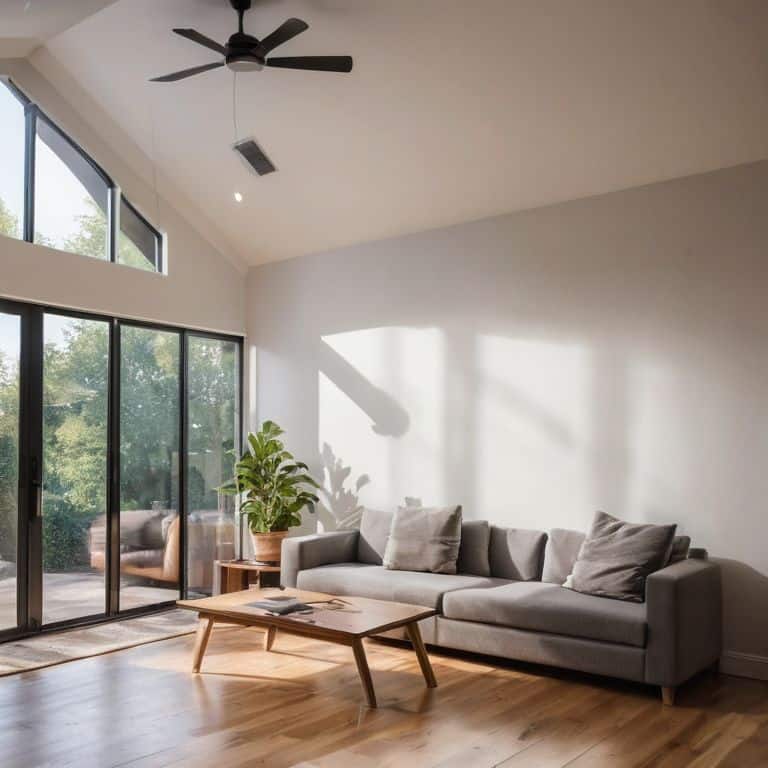
When it comes to finding the perfect spot for your WiFi router, optimal wifi router height is crucial. Generally, placing your router on a high shelf or mounting it on a wall can help improve coverage. This is because WiFi signals tend to spread out and down from the source, so the higher it is, the more area it can cover. Additionally, try to avoid putting your router near thick walls or other obstacles that could reduce the signal strength.
In larger homes, wifi router placement for large homes requires a bit more strategy. One approach is to use a central wifi router location, where the router is placed in a central area of the home to minimize distance and obstacles. This can help ensure that the signal reaches all areas of the home without significant degradation. It’s also important to consider the location of devices that may be causing reducing wifi signal interference, such as cordless phones or microwaves, and try to place the router away from these devices.
To further improve coverage, consider using improving wifi coverage in dead zones techniques, such as using WiFi range extenders or mesh networks. These can help fill in areas where the signal is weak, ensuring that you have a strong and reliable connection throughout your home. By following these tips and finding the right location for your router, you can minimizing wifi signal obstacles and enjoy fast and reliable WiFi throughout your home.
Central Location Strategies for Large Homes
For larger homes, finding a central location is key. Imagine your home as a big circle, and you want to place your WiFi router right in the middle. This ensures that the signal radiates out evenly in all directions. Think of it like a car’s radio antenna – if it’s placed in the center of the car, you’re more likely to get a clear signal. In a large home, consider placing your router in a central hallway or a living room that’s roughly equidistant from all the bedrooms and other areas where devices will be used.
To make it even simpler, try drawing a basic floor plan of your home and marking the spot where you think the center is. Then, place your router there and see how your devices connect. You might need to tweak the location a bit, but starting from the center gives you the best chance of getting a strong signal throughout your home.
Reducing Interference for Optimal Wifi Router Height
Reducing Interference for Optimal Wifi Router Height
Now that we’ve found the perfect spot, let’s talk about the best height for your WiFi router. Think of it like tuning a radio – you want to find the sweet spot where the signal comes in clear. Generally, placing your router about 5-7 feet off the ground is a good starting point. This helps reduce interference from furniture and other obstacles. Imagine the signal as a car driving through a crowded city – the higher you place the router, the fewer “traffic jams” it’ll encounter, resulting in a stronger, more reliable connection.
5 Key Tips to Boost Your WiFi Signal
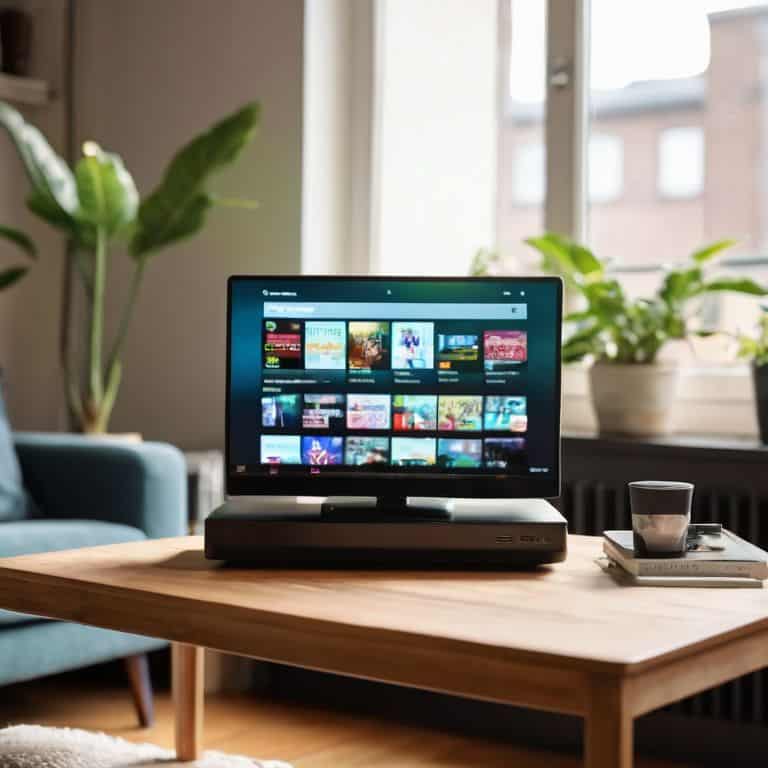
- Place your WiFi router in a central location to minimize dead spots and ensure equal coverage throughout your home
- Position your WiFi router at an optimal height, usually between 3-6 feet off the ground, to reduce interference from walls and furniture
- Keep your WiFi router away from metal objects, such as file cabinets and refrigerators, which can block or weaken the signal
- Use a WiFi analyzer app to scan for nearby networks and choose a channel with minimal interference to improve your router’s performance
- Update your WiFi router’s firmware regularly to take advantage of the latest performance enhancements and security patches
Key Takeaways for Optimal WiFi Router Placement
Don’t panic! Placing your WiFi router in a central location, such as a living room or home office, can significantly improve coverage throughout your home
Reducing interference from other devices and obstacles is crucial – think of it like tuning a car radio to get the best signal, you want to minimize static for optimal performance
Experimenting with different router heights and positions, such as elevating it above furniture or placing it on a wall, can make a big difference in achieving a strong and reliable WiFi signal throughout your space
The Key to Seamless Connectivity
Placing your WiFi router is like parking a car in a crowded city – you need to find the sweet spot where everything can move smoothly, and that’s usually in a central location, away from walls and interference, giving you the best coverage throughout your home.
David Fletcher
Conclusion: You're Now a WiFi Router Placement Master
Don’t panic! Let’s recap the key points to ensure you have the best WiFi coverage in your home. We’ve discussed the importance of placing your WiFi router in a central location to minimize interference and maximize signal strength. We’ve also explored strategies for reducing interference, such as placing your router at an optimal height and using it in a way that avoids physical barriers. Additionally, for larger homes, we touched on the idea of using a mesh network or WiFi extenders to boost your signal. By following these simple steps, you’ll be well on your way to enjoying a seamless and frustration-free online experience.
As you finish setting up your WiFi router, remember that empowerment through technology is the ultimate goal. You’ve taken the first step in reclaiming your digital space and making your life easier. Don’t be afraid to experiment and fine-tune your setup – it’s all part of the process. With your newfound confidence, you’ll be tinkering with smart home devices and exploring the endless possibilities of home automation in no time. Congratulations, you’ve got this!
Frequently Asked Questions
Will placing my WiFi router near a window improve its signal strength?
Don’t Panic! Placing your WiFi router near a window might seem like a good idea, but it can actually be counterproductive. Think of it like trying to tune into a radio station in your car – if you’re too close to a big obstacle, like a mountain, the signal gets blocked. Similarly, walls, trees, and even neighbors’ homes can interfere with your WiFi signal if your router is near a window.
How can I determine the optimal WiFi router height in a room with a high ceiling?
Don’t Panic! For high ceilings, a good rule of thumb is to place your WiFi router at least halfway up the wall to minimize interference. Think of it like adjusting your car’s antenna for better radio reception – you want to find that sweet spot for the best signal. Try placing it around 5-6 feet off the ground for a good starting point.
Can I place my WiFi router in a closet or enclosed space without affecting its coverage?
Don’t Panic! Placing your WiFi router in a closet or enclosed space can affect coverage. Think of it like trying to hear a car radio with the doors closed – the signal gets muffled. Try to place your router in an open area to get the best signal strength throughout your home.
